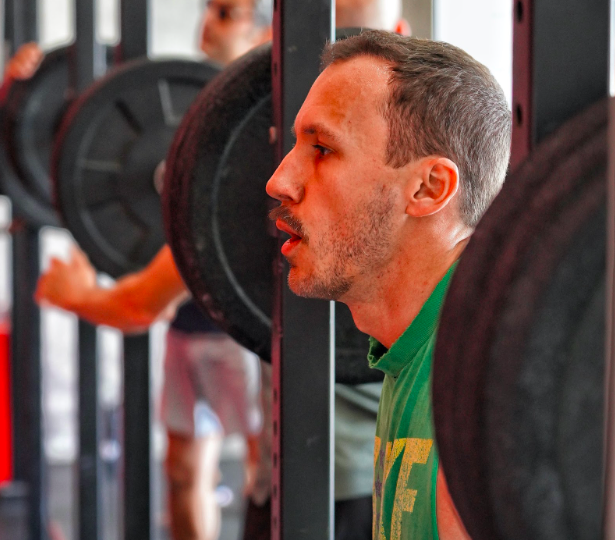
There is a silent killer in your squat. To add insult to injury, it’s happening in an area you likely aren’t even paying attention to in the first place!
Let me ask you this. Where do most things go wrong in the squat? If you had asked me that question ten years ago, I would have undoubtedly said the bottom of the squat. It’s the most challenging portion of the lift, right? It is where we fail. It’s where the most common movement faults arise, and it’s the place with the least mechanical advantage.
Yet, there is an unfortunate truth to add to our discussion. Hear me out. If your pelvis starts in a poor position, you have no real chance of finding and maintaining a good position at the bottom of the squat (or anywhere else in the range of motion).
Think of your pelvis as a bowl of water. If I’ve lost you already, you can try to imagine the skeleton from the corner of high school science class. Or you can touch the protruding hip bones in the front of your waist and follow that boney structure around the back of your waist. This is the “rim” of this imaginary bowl of water.
The reason for the bowl of water metaphor is because, with it, you can bring awareness to the orientation of your pelvis. To understand what I mean, stand with your hands on your hips and move your pelvis according to these instructions:
- Tilt to spill water out of the left.
- Tilt to spill water out of the right.
- Tilt to spill water out of the front.
- Tilt to spill water out of the back.
The simplest way to fix your squat is to call awareness to the position of your pelvis before you move. Specifically avoiding an anterior pelvic tilt.
Most squatters begin their descent into the squat with slight dumping of water from their bowl out the front. This “pelvic tilt” sets them up for failure later in the lift, especially at the bottom.
Years ago, John Welbourn, the founder of Power Athlete HQ and 10-year NFL veteran, offered me a cue that would change my squat for the rest of my life. He said, “Everyone thinks about winning the rep at the bottom. Forget that! Win the squat rep with how you move in the first six inches at the top.”
The reason this pelvic position is so important is that our ability to stabilize and create pressure in our torso is, in part, based on the relationship between the top of the hip bones (or rim of the “bowl of water” and the base of your rib cage. This is because the muscles of the pelvic floor and the diaphragm serve as the top and bottom of the cylindrical barrel of your torso. Having the planes of top and the bottom of this barrel aligned is optimal for peak tension and stability. Having misalignment leaks tension and makes us instantly less stable and strong, especially at the bottom of the squat. It also can contribute to back pain.
While having a great position and attention to detail in the bottom portion of your next big squatting effort is important, nothing might be as important as how you start. Fix your position before you move into your descent, and you just might first yourself with a new PR without even moving!
8/5/22 WOD
DEUCE ATHLETICS GPP
Complete 5 rounds for quality of:
5 Weighted Box Jumps
8 Single Arm Lat Pulldowns
Then, complete 3 rounds for quality of:
15 Tricep Pull downs
8 Landmine Rotations
Then, AMRAP 15
15 Air Squats
10 Lateral Plate Push-ups
10 Plate Viper Presses (45/25)
DEUCE GARAGE GPP
8-8-8-8
Weighted Chin-Up
Complete 3 rounds for quality of:
10-15 Parallete Push Ups
:30-:45 L-Sit/Tuck Hold
6-8 Shoot Throughs
Then, AMRAP 16
20 Alternating DB FR Reverse Lunges (50/35)
10 DB Front Squats
10 Toes-to-Bar

